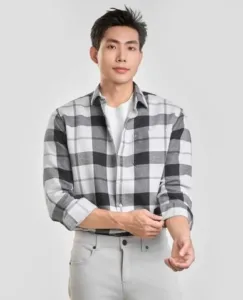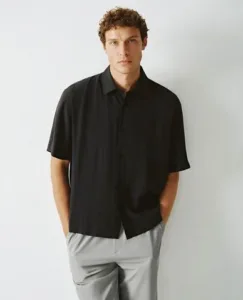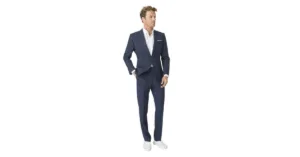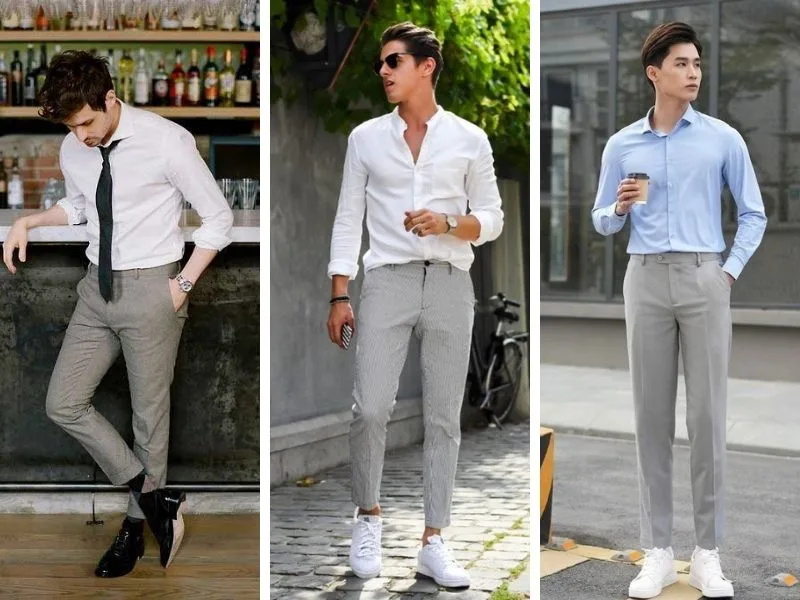news
The Art of Men’s Style: Elevating Your Look From the Basics
Style is not simply about wearing expensive clothes; it is the art of combining pieces to create a cohesive look that reflects your unique personality. For men, mastering the art of dressing up, starting with foundational items like shirts and trousers, is the key to feeling confident in any situation. This article will delve into the nuances of men’s fashion, from the principles of color and fabric coordination to the technique of layering, all aimed at effectively elevating your personal style.

1. The Foundation: Understanding Colors and Fabrics
Before you start, it’s essential to understand two crucial elements: colors and fabrics.
Colors
Color is the first factor that determines the success of an outfit. Start with a neutral palette, including black, white, grey, navy, and beige (khaki). These are fundamental colors that are easy to mix and match and always create a sense of elegance.
- Monochromatic Styling: Wear different shades of the same color (e.g., a light blue shirt with dark blue trousers). This creates a seamless, elongated silhouette.
- Contrasting Colors: Combine colors that are opposite each other on the color wheel (e.g., a beige jacket with navy trousers). This technique creates a strong, bold statement.
- Analogous Colors: Pair colors that are next to each other on the color wheel (e.g., a blue shirt with green pants). This is a safe and visually pleasing approach.
Fabrics
The fabric of your clothes affects both their appearance and feel. An outfit can look less polished if the materials don’t work well together. Pay attention to:
- Cotton: The most popular choice, it is comfortable and easy to care for. Used for t-shirts, shirts, and chinos.
- Denim: A durable and youthful fabric, commonly used for jeans and jackets.
- Linen: Lightweight and breathable, perfect for summer. It creates a relaxed, effortless look.
- Wool: Soft and warm, often used for dress trousers or outerwear.
- Khaki: A durable, structured material, typically used for chinos.

2. Styling with Shirts and Trousers
Shirts and trousers are the soul of any man’s wardrobe. Knowing how to combine them will unlock countless different styles.
Smart Casual Style
This is the perfect style for the office, a date, or any event that requires a polished yet comfortable look.
- Shirt: Choose a classic button-down shirt (Oxford, button-down collar) or a plain linen shirt. Colors like white, light blue, or small stripes are safe choices.
- Trousers: Pair with chinos in beige, navy, or olive. Chinos are not only comfortable but also offer a more polished appearance than jeans.
- Suggestions:
- White shirt + beige chinos + loafers.
- Light blue shirt + navy chinos + derby shoes.
Weekend Casual Style
This style is all about comfort and energy without looking sloppy.
- Shirt: Opt for a denim shirt, a plaid flannel shirt, or a patterned shirt. You can wear the shirt on its own or layer it over a t-shirt.
- Trousers: Combine with jeans or joggers (the kind with a structured khaki or cotton fabric).
- Suggestions:
- White t-shirt + flannel shirt as an outer layer + jeans + sneakers.
- Denim shirt + a different colored pair of jeans + white sneakers.
Minimalist Style
This style prioritizes simplicity, sophistication, and focuses on quality.
- Shirt: Plain, pattern-free shirts. The main colors are white, black, grey, and beige.
- Trousers: Dress pants, chinos, or slim-fit jeans.
- Suggestions:
- White shirt + grey dress pants + black oxford shoes.
- Beige shirt + black jeans + white sneakers.
3. Elevating Your Outfit: Adding Layers and Accessories
Once you’ve mastered combining shirts and trousers, try adding layers and accessories to make a statement.
Layering
Layering is a technique that gives an outfit depth and personality.
- The simplest way: A t-shirt inside + a shirt as an outer layer.
- For a more formal look: A shirt + a thin crew-neck or V-neck sweater + dress pants.
- Warm and fashionable: A shirt + a sweater + an overcoat (blazer, trench coat, or leather jacket).

Accessories
Accessories are small details that have a huge impact.
- Belt: Choose a belt that matches your shoes to create a consistent look.
- Watch: The right watch can elevate your look to another level.
- Bag: A briefcase, backpack, or tote bag can complete your style and offer practicality.
- Scarf: A scarf is a great accessory for winter, keeping you warm while adding a point of interest.
4. The “Tucked In” vs. “Untucked” Rule
Whether you tuck in your shirt or not is an important factor in dressing well.
- Tucked In: Suitable for dress pants, chinos, and any outfit that requires a formal touch. This method helps you look tidier, taller, and more polished.
- Untucked: Best for shirts with a rounded hem, casual shirts, flannel shirts, or denim shirts. This creates a relaxed, effortless look that goes well with jeans or shorts.
By mastering these principles, you can easily transform your wardrobe, from the most basic items, to create a personal style that makes you feel confident. Experiment and find the style that suits you best!

